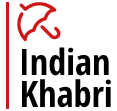Freelancing offers a pathway to professional autonomy and flexibility. This essay serves as a comprehensive guide, outlining key steps, skills, and strategies for individuals looking to embark on the freelancing journey and carve a successful career as an independent professional.
1. Self-Reflection and Skill Assessment:
1.1 Identify Your Skills:
- Conduct a self-assessment to identify your strengths, skills, and areas of expertise. Consider both hard skills and soft skills relevant to freelancing.
1.2 Passion and Interest:
- Align freelancing opportunities with your passions and interests. A genuine interest in your work enhances motivation and job satisfaction.
2. Choose Your Niche:
2.1 Research Market Demand:
- Investigate market demand for various freelancing services. Choose a niche that aligns with your skills and has a demand in the market.
2.2 Specialization:
- Consider specializing in a specific area within your chosen niche. Specialization can set you apart and attract clients seeking expertise.
3. Create a Professional Online Presence:
3.1 Build a Portfolio:
- Develop a portfolio showcasing your best work. Include case studies, testimonials, and examples of projects that demonstrate your skills and expertise.
3.2 Create a Personal Website:
- Establish a personal website to serve as your online portfolio. Include a professional bio, a list of services, and contact information.
4. Set Clear Goals and Pricing:
4.1 Define Your Goals:
- Set clear short-term and long-term goals for your freelancing career. Goals provide direction and help measure your progress.
4.2 Establish Competitive Pricing:
- Research market rates for freelancers in your niche. Determine competitive pricing that reflects your skills and experience.
5. Platforms and Networking:
5.1 Freelance Platforms:
- Join freelancing platforms such as Upwork, Freelancer, or Fiverr. Create a compelling profile highlighting your skills, experience, and portfolio.
5.2 Networking:
- Network within your industry and on social media platforms. Engage with potential clients, other freelancers, and industry professionals.
6. Develop a Strong Proposal:
6.1 Customize Your Proposals:
- Tailor your proposals to each client’s needs. Address their specific requirements, demonstrate your understanding, and propose solutions.
6.2 Highlight Unique Selling Points:
- Clearly articulate your unique selling points. Showcase what sets you apart from other freelancers in terms of skills, experience, and approach.
7. Time Management and Organization:
7.1 Create a Schedule:
- Develop a daily or weekly schedule that includes dedicated work hours. Consistency is key to meeting deadlines and maintaining productivity.
7.2 Use Productivity Tools:
- Utilize productivity tools and apps to streamline tasks, manage projects, and track your time. Stay organized to enhance efficiency.
8. Establish Clear Communication:
8.1 Effective Communication:
- Communicate clearly and professionally with clients. Promptly respond to messages, provide regular updates, and set expectations for deliverables.
8.2 Set Boundaries:
- Establish clear boundaries regarding working hours, scope of work, and communication channels. Setting boundaries contributes to a healthy work-life balance.
9. Build Client Relationships:
9.1 Underpromise and Overdeliver:
- Exceed client expectations by delivering high-quality work. Underpromising and overdelivering fosters positive client relationships.
9.2 Seek Feedback:
- Request feedback from clients upon project completion. Use feedback as a tool for continuous improvement and building a positive reputation.
10. Financial Management:
10.1 Budgeting: – Develop a budget to manage your finances effectively. Account for business expenses, taxes, and savings.
10.2 Payment Terms: – Clearly define payment terms in your contracts. Choose a secure payment method and ensure clients understand the invoicing process.
11. Continuous Learning and Skill Enhancement:
11.1 Stay Updated: – Stay informed about industry trends and advancements. Continuous learning ensures you stay relevant in a dynamic freelancing landscape.
11.2 Skill Enhancement: – Invest time in enhancing your skills. Take online courses, attend workshops, and acquire certifications to broaden your skill set.
12. Diversify and Expand:
12.1 Diversify Services: – Consider diversifying your freelancing services based on emerging trends or complementary skills. This expands your client base and income streams.
12.2 Explore New Platforms: – Explore new freelancing platforms or collaborate with other freelancers. Diversifying your presence can lead to additional opportunities.
Conclusion:
Embarking on a freelancing career requires a strategic approach, dedication, and a commitment to continuous improvement. By following the steps outlined in this guide, aspiring freelancers can build a solid foundation, attract clients, and establish a successful and fulfilling career as independent professionals.
Remember that freelancing is not just about working independently; it’s about creating a thriving business. Embrace the flexibility, learn from experiences, and revel in the autonomy that comes with being your own boss. The journey of freelancing is a dynamic and evolving adventure, offering opportunities for growth, creativity, and professional fulfillment.
